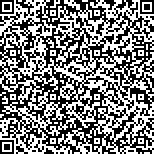下载中心
优秀审稿专家
优秀论文
相关链接
摘要

本文以武汉市江北核心区域7个行政区为例,以“高分五号”(GF-5)高光谱遥感影像为实验数据,提出了一种基于深度学习的空—谱结合高光谱影像分类算法(SSUN)的改进算法SSUN-CRF,通过全连接条件随机场(FC-CRF)对SSUN分类结果进行细化,并结合选取的7个景观格局指数分别从类型斑块水平以及景观水平分析7个行政区景观格局特点及武汉市城市化趋势。结果表明:(1)SSUN-CRF算法能够快速准确地提取城市用地类型,总体精度可达0.9048,Kappa系数可达0.8807;(2)从斑块类型水平上分析:根据各行政区不同类别景观类型百分比(PLAND)可以看出,武汉市主城区以居住用地为主,汉阳区3类居住用地PLAND指数高于其他主城区,表明汉阳存在较大“城中村”现象;江汉区商业用地斑块密度(PD)高且聚合度(AI)低,即商业用地多且分布均匀,表明江汉区是武汉的重要商贸区;(3)从景观层次水平上分析:根据香农多样性(SHDI)、香农均匀度(SHEI)指数分析可以看出,武汉市江北区域各用地类型总体分布均衡,景观生态多样性和稳定性较好;从斑块密度(PD)和香农多样性(SHDI)空间布局分析可知武汉市的城市扩张呈现以主城区为核心向外蔓延趋势,且沿主城区东南、西南方向扩张趋势明显。本文研究成果对武汉市总体发展规划、优化土地利用及可持续发展建设具有重要的指导意义,进一步可为发展长江经济带、“长江主轴”提供决策参考。
With the increasing of population, the world has experienced unprecedented urbanization, especially in developing countries. Rapid urbanization inevitably brings serious ecological and environmental problems. In order to better monitor the urbanization process of mega-cities, this study, which focus on north of the Yangtze river of Wuhan metropolitan region, attempts aimed to analyze the urban landscape pattern characteristics and the trends of urbanization trends by using the north of the Yangtze River of Wuhan metropolitan region as the case study. In this study, we proposed a modified Spectral–Spatial Unified Network (SSUN-)-CRF method, which revised from a Spectral-Spatial Unified Networks classification (SSUN) method, based on deep-learning, to extract the urban land use classification on a fine scale and recover detailed structure with GF-5 hyperspectral data in 2018. Then, we assessed seven key landscape pattern indices to understand the landscape pattern features of seven regions in Wuhan, which are separated into main urban area and suburban area. Then, in this paper we built the urban expansion model, from class metrics to landscape metrics. The resulst show that: (1) The SSUN-CRF classification algorithm can achieve as little loss of spectral information as possible while taking into account spatial information. Our method can effectively achieve edge refinement and overcome the misclassification of semantic segmentation. The Overall Accuracy (OA) and Kappa were higher than 0.9048 and 0.8807, respectively. (2) According to the landscape analysis, on the class metrics level: the PLAND (Percentage of Landscape) indices of different classes in different districts demonstrate that Wuhan has abundant water resource, the main urban area of Wuhan is more urbanized than that of suburban area. Comparing three kinds of residential areas, Residential Two is the principal part with high-rise buildings. It indicate that Wuhan has a higher per capita living standard. However, Hanyang District develops slower than other main urban areas with the problem of “villages in the city”. Furthermore, the advantages of agriculture and water area in the suburban area are obvious, the ecological environment is good, but the urbanization degree is low. The the ecological virescence of suburban area needs to be improved. The PD (Patch Density) and AI (Aggregation Index) indices illustrate that Jianghan District has the most evenly distributed commercial area, and has the center of business in Wuhan. While, the commercial area in the suburban district is less and concentrated. (3) On the landscape metrics level: We choose 4 indices to analysis the landscape in Wuhan including PAFRAC (Perimeter Area Fractal Dimension), CONTAG (Contagion Index), SHDI (Shannon's Diversity Index) and SHEI (Shannon's Evenness Index). Wuhan shows the stable and diverse landscape ecological with balanced land use distribution. What’s more, after using moving window to evaluate the state of Wuhan’s urbanization, it is clear to see the tendency in line from the main urban area to the southeast and southwest of the suburban districts. The main urban area is more evenly distributed and urbanized than the suburban area. The results of this research of serve as guide for the overall development plan, optimizing land use optimization, and sustainable development construction in Wuhan. What’s more, this model can further provide decision-making reference for the development of the Yangtze River Economic Belt and the “Yangtze River Spindle.”

